How To Learn To Swim?
Summer is quickly approaching which means it’s almost time to go swimming! Many of us look forward to these summer months so we can spend more time outdoors enjoying the weather with our family and friends. This summer, us at Coast2Coast want to make sure you’re prepared to have a safe summer. In today’s blog post, we will be discussing:
- Can you learn how to swim by yourself?
- What are the steps to learn how to swim?
- How do I get over my fear of swimming?
Register for Mobile Swimming Lessons
How to learn to swim by yourself?
One of the most asked questions in swimming is: can you learn how to swim by yourself? Although it is possible to learn by yourself, we do recommend that you learn how to swim with a trained instructor for safety purposes. If you have no prior swim knowledge, you will increase your risk of drowning.
Options to learn swimming
-
Take a course with a trained instructor
The safest and highly recommended way to learn how to swim is by signing up for swimming lessons with a swim school and have an instructor teach you the proper skills. Swimming instructors will not only teach you different swim strokes, but also teach you lifesaving skills such as treading water. To learn faster, you can ask your instructor for homework to practice more on your own time in a safe environment.
If you want to learn how to swim with an instructor, Coast2Coast offers swimming lessons for all ages. We offer public swimming lessons, mobile swimming lessons and integrated swimming lessons.
-
Practice with a friend or family member
Another way to learn how to swim is with a friend or family member who is a strong swimmer and knows the techniques and strokes. In case of an emergency, you will likely be able to get help from them. Although this is a safer option than swimming by yourself, we still strongly recommend to attend a swimming school with certified lifeguards and instructors always on deck. Coast2Coast offers swimming classes with professionals always on scene who are experienced and trained at the highest levels of aquatics and drowning prevention. Remember to practice in the shallow end of the pool at all times.
-
Practice on your own
The least safe way to learn how to swim would be to practice on your own. If you are taking this risk, it is recommended to practice in the shallow end of a pool with an innertube or another floatation device on hand. Reading or watching videos on how to swim would be a way to prepare yourself before entering the pool. Please be aware that this is not a recommended option, though.
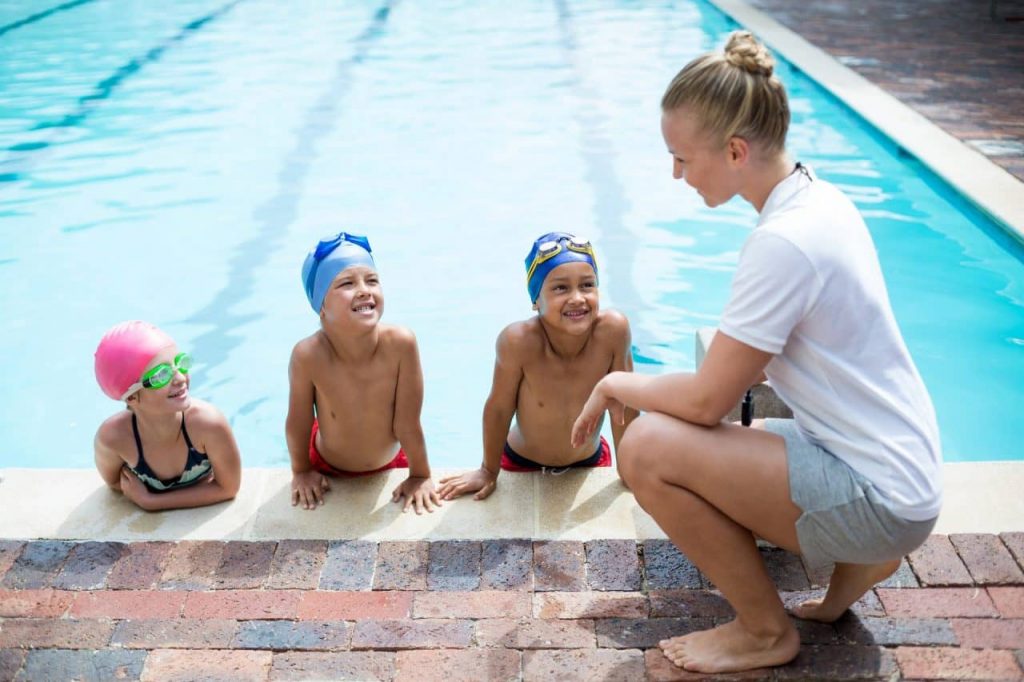
Swimming Lessons for All Ages!
What are the steps to learn how to swim?
Knowing how to swim is a great skill to have. Keep in mind that everyone learns at different levels, so these steps may not work for you. If you are fearful of water, scroll down to read how to get over your fear of swimming.
1) Become comfortable with the water
Begin practicing in the shallow end of a pool with your swimming instructor. You want to be sure you can stand up comfortably if you lose your balance or need to take a break.
2) Practice floating
Keep in mind, our body is naturally a pretty buoyant as we fill our lungs with air. All our bodies are different, though. You can practice floating, first, by holding onto the edge of a pool and lifting your legs off the ground. Practice both on your stomach and on your back while holding onto the edge of the pool. Once you feel comfortable floating while holding onto the edge, you can practice floating in the shallow end of a pool alone or with the assistance of your swimming instructor or another person.
If you ever panic while swimming in deep water, resort to floating on your back and try to relax. Give yourself time to calm down before beginning swimming again.
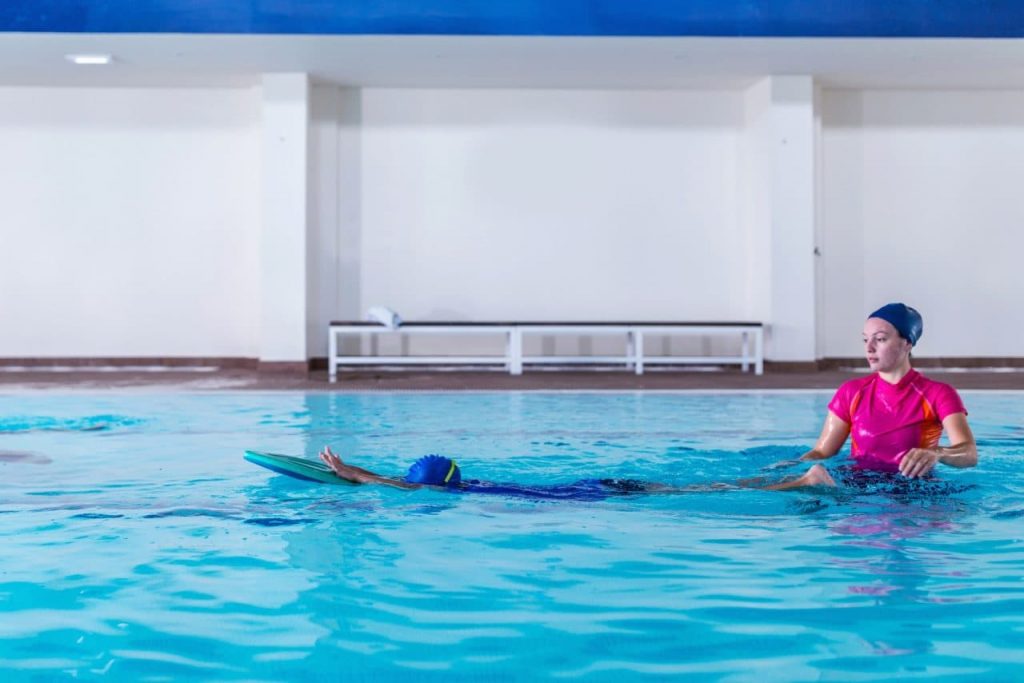
3) Practice blowing bubbles underwater
In the shallow end of the pool, take a deep breath before submerging your face underwater. Exhale fully with your nose. Small bubbles will form. You can also practice by exhaling through your mouth.
If you’re uncomfortable blowing bubbles through your nose, you can wear a nose plug or hold your nose closed with one hand and exhale through your mouth.
It also may be helpful to wear goggles while going underwater. Make sure the goggles fit properly or else water may enter them.
4) Practice kicking
The safest way to practice kicking is by holding onto the edge of a pool like in the picture below. The most typical kick to practice is a flutter kick. You will keep your legs fairly straight while alternating which leg is kicking. This is a great, and safe, way to practice kicking techniques while staying afloat.
Once you feel comfortable kicking while holding onto the edge of a pool, you can try practicing while floating on your back in shallow water.
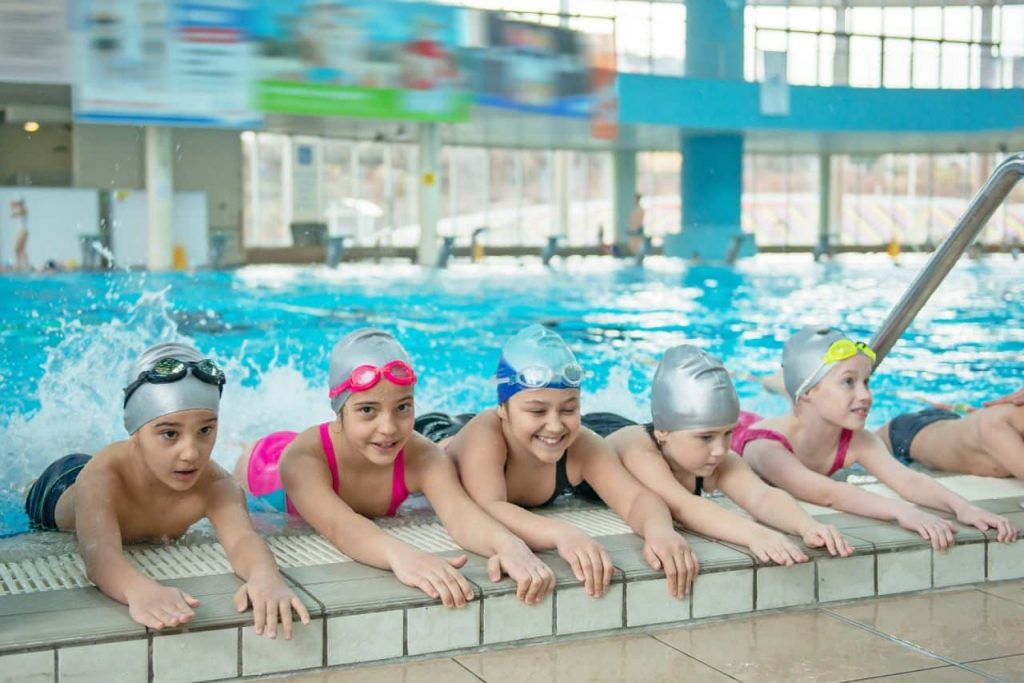
5) Practice arm strokes
Once you feel comfortable kicking your feet, you can begin practicing arm stroke techniques. To begin, start with backstroke. Not only is it one of the easier strokes to learn, but it will also keep your face above water. To perform a backstroke, start by floating on your back. You will then lift one arm straight out of the water, palm forward, fingers together. While keeping that arm straight, bring it back towards the side of your head, then underwater. Continue moving your arm in a circular motion along the side of your body and repeat. You will do this with both arms, alternating them.
You will also need to add in kicking with your legs. Flutter each of your legs with a slight bend in both knees. Keep your toes pointed.
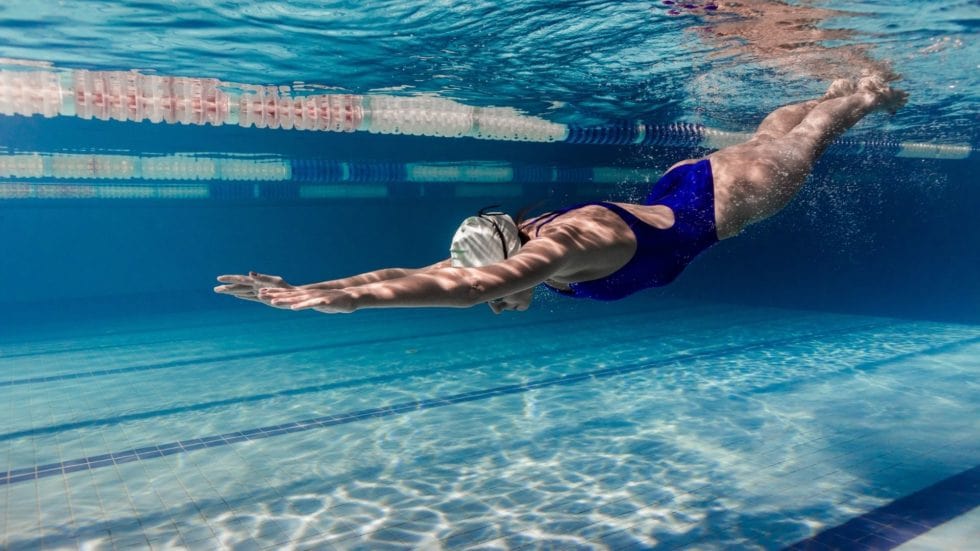
WARNING: While learning to swim alone, use a pool with a lifeguard. It is never recommended to swim alone unless you are a strong swimmer.
Practice Swimming Skills With a Certified Instructor
How do I get over my fear of swimming?
Many people are afraid of water and swimming simply because they were never taught how to swim. Others may be afraid because of a previous traumatic experience (e.g. almost drowning). How do you get over this fear and enjoy the water?
Take it slow and build confidence:
-
Mentally prepare yourself: Accept that you’ll be entering a pool and begin learning to swim. Fear is psychological and can be overcome. A swim instructor can be a great resource to help you face this fear.
Gradual acclimation to the water
-
Get comfortable around water: Start by simply sitting on the edge of the pool with your legs in the water. This will help you build water confidence at your own pace.
-
Gradually submerge your body: Slowly submerge more of your body into the water, eventually reaching chest-deep water.
Desensitize yourself to water on your face:
-
Splash your face: Once comfortable in chest-deep water, try splashing your face. You don’t need to go completely underwater unless you’re ready. This will help you get used to water touching your face.
Practice basic skills with support:
-
Go underwater (optional): When comfortable, take a deep breath and try going under the water for a few seconds each time. Wearing goggles and plugging your nose can help. Once underwater, blow bubbles out your mouth or nose.
-
Hold onto the pool edge and practice floating and kicking: This is a great way to get comfortable with these fundamental swimming techniques.
Invest in proper instruction:
-
Use flotation devices: If your child is nervous about the water, a pool noodle, swim board, or other flotation devices can offer a sense of security. These tools let your child get comfortable in the water while giving them extra support. They can be great for practicing kicking and basic arm strokes in a safe and enjoyable way, especially during those first swimming lessons.
-
Take swimming lessons: The best option is to learn how to swim with a trained instructor. Not only will they teach you proper swimming skills, like freestyle swimming and breathing exercises for swimming, but they will also help you face your fear and keep you safe during water safety training. Inquire about swimming classes to begin your journey towards enjoying the water! Remember, consistent practice swimming is key to improving your skills and building confidence.
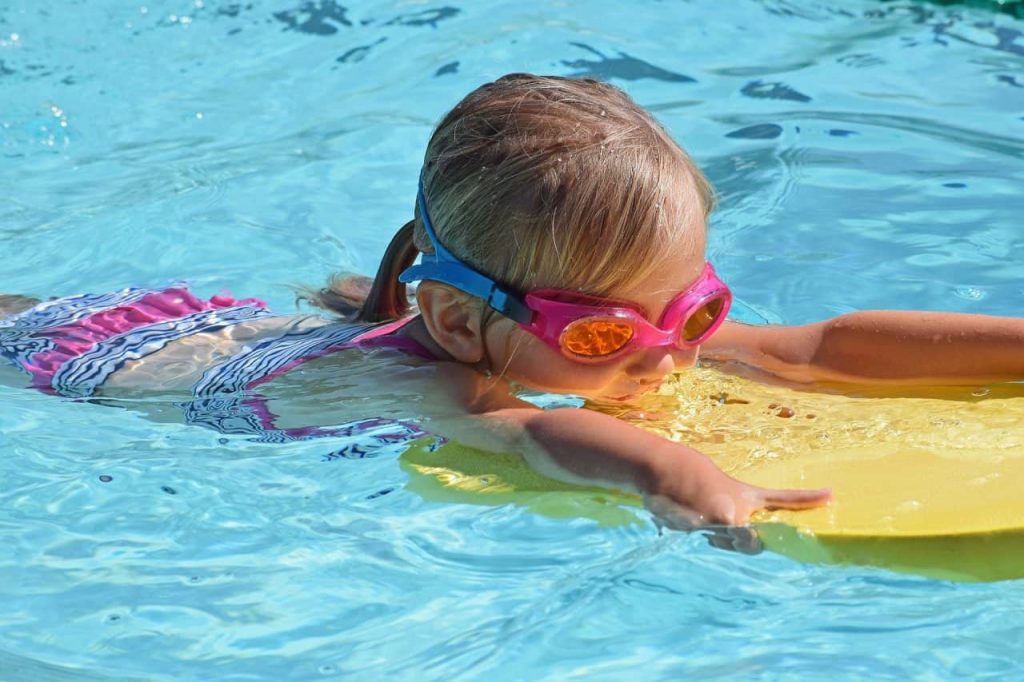
Important Safety Tips for Swimming with Children
Learning to swim is fun, but safety should always come first! Here are some important tips to keep in mind when children are in the water:
-
Adult Supervision: Never let children swim alone. Constant adult supervision is essential to ensure a safe enjoyable experience and make them feel confident.
-
Shallow End: Beginner swimmers should stay in the shallow end where they can stand up and never go near the deep end. This builds confidence and reduces risks. Being near the shallow end allows the children to regain their footing in water if ever they lose their balance.
-
Life Jackets: Experts suggest that life jackets and flotation devices should be worn by everyone, not just young children and inexperienced swimmers. These provide extra support and buoyancy for those still mastering their swimming skills.
-
Buddy Up: Encourage children to swim with a buddy for extra safety. This system enhances safety and makes swimming fun. Ensure that the companion is always within the reach of the child and both of them are aware of each other’s location at all times.
-
Breathing Techniques: Breathing techniques are as important as floating techniques. Start teaching children basic breathing techniques early on. Even simple practice like blowing bubbles helps familiarize them with breath control in the water. Constantly practicing these basic techniques could help them familiarize with the process and prepare them for more advanced skills later on.
Learning how to swim may seem like a daunting task to some, but it’s a great skill to have. You need to take time to practice your swimming skill in order to get better. Once you’re comfortable with your swimming abilities, you’ll be able to enjoy the pool, beach, lake and more with your friends and family safely. Enjoy the process, you’ll be swimming laps like a fish.
Invest In Yourself






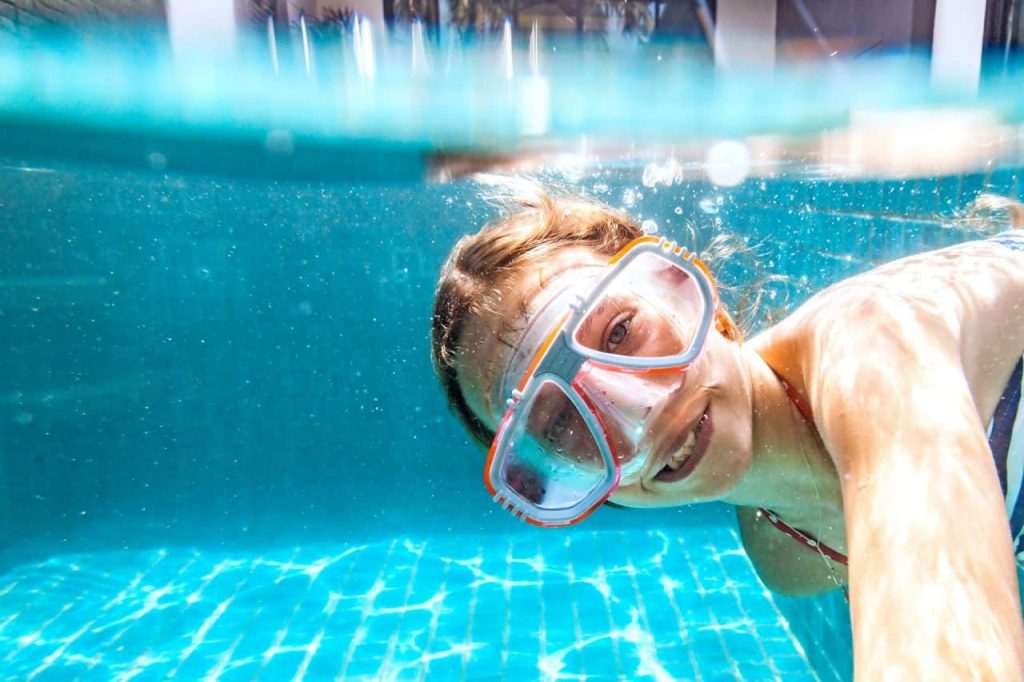



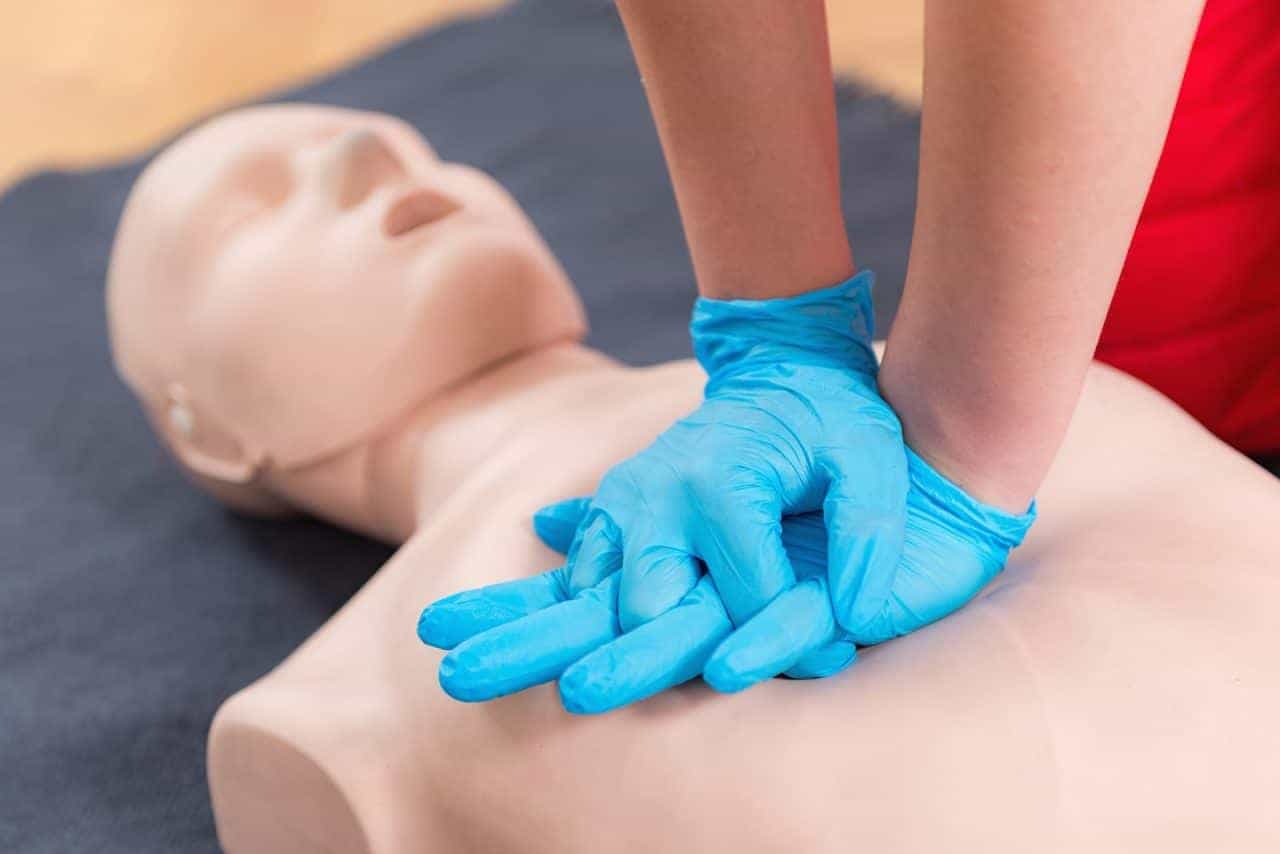
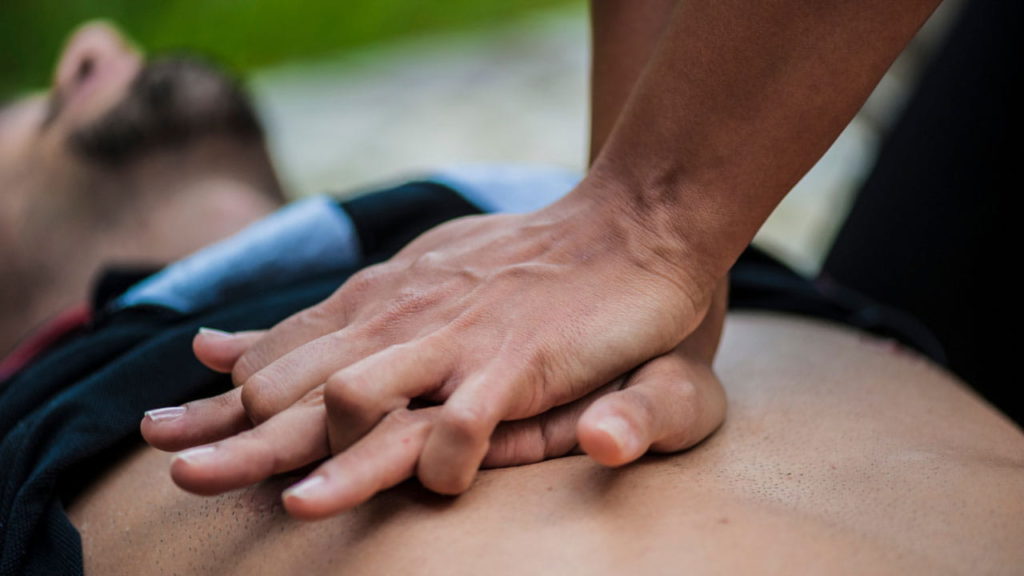
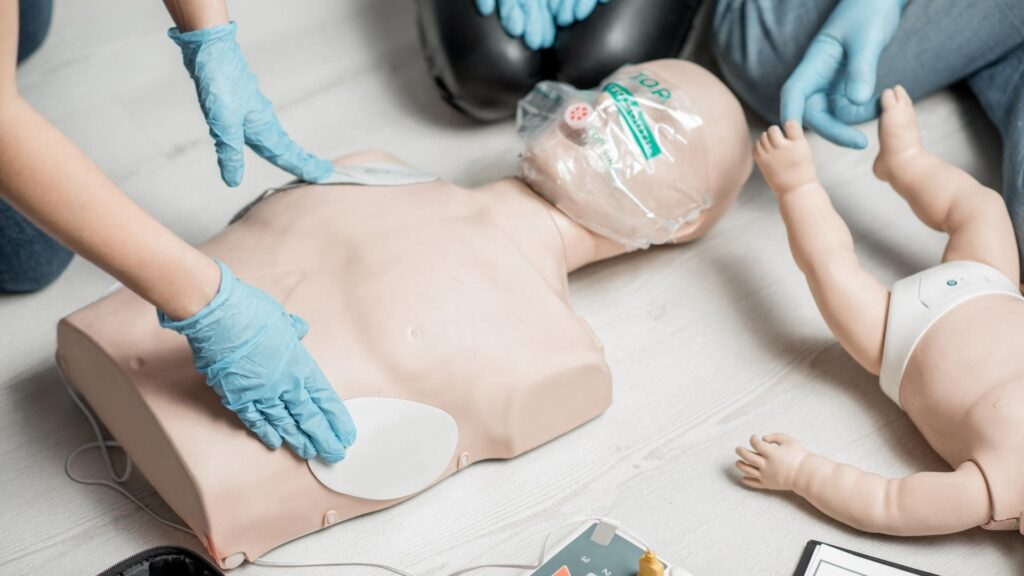

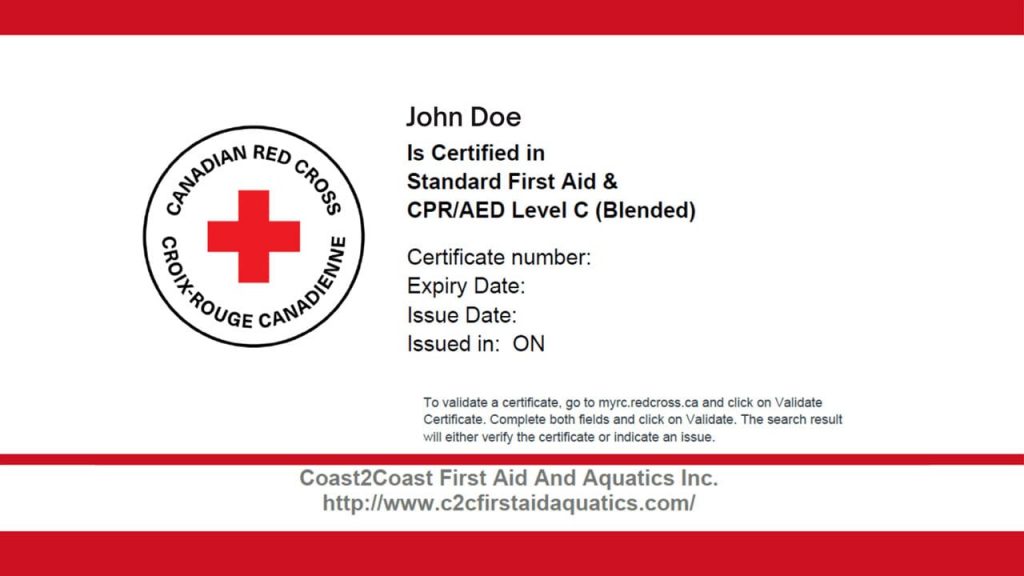
No comment yet, add your voice below!